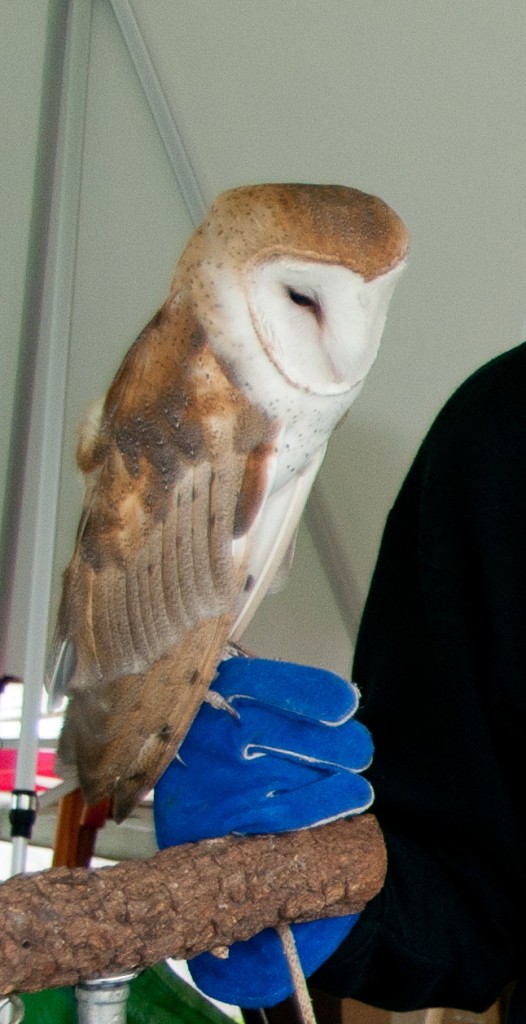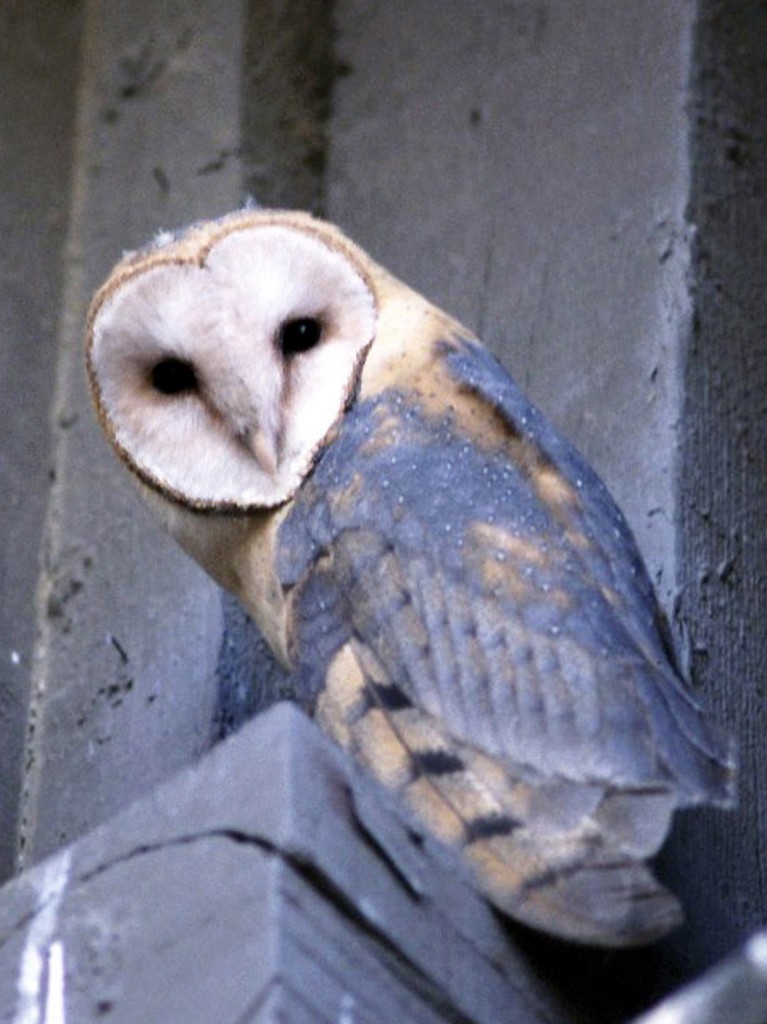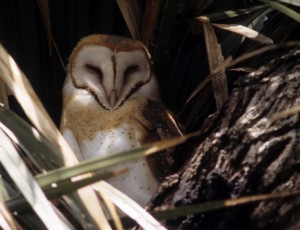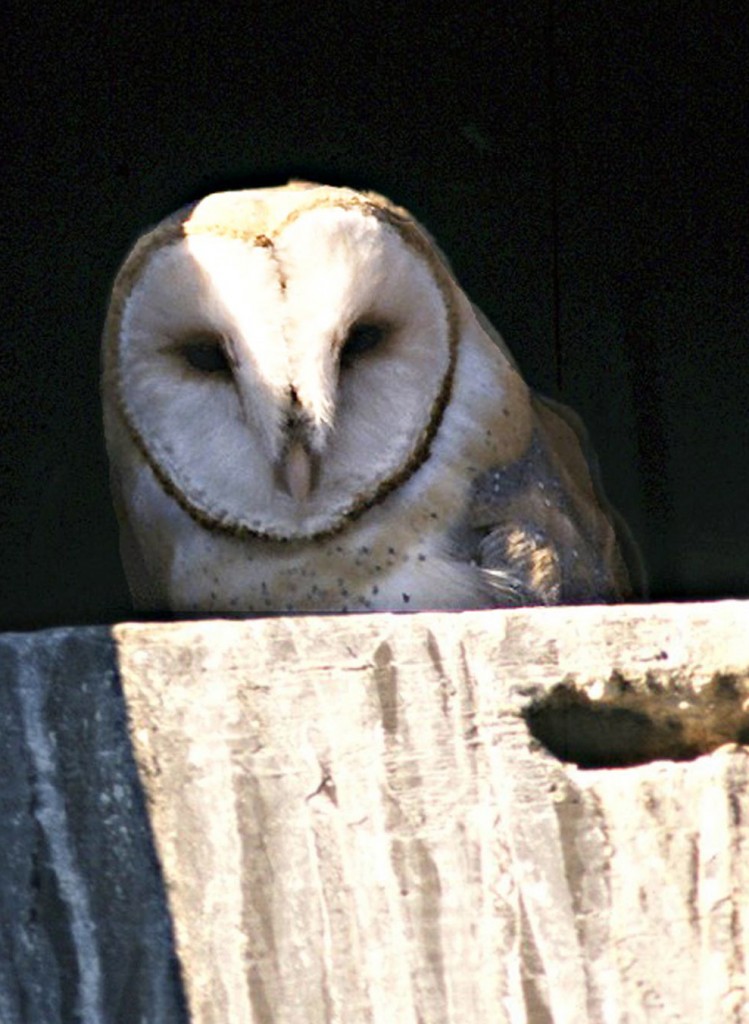Barn Owls in Search of Homes
July 1, 2011 clifftop CliffNotes
With a voice that could double for a banshee’s scream, pale ghostly coloration, nocturnal habits, and an eagerness to set up housekeeping in abandoned buildings, barn owls are naturals for supernatural myth making. Superstition aside, barn owls once were known and welcomed co-residents as a farmer’s best weapons against grain-thieving mice, not even requiring the occasional fresh cream dividends demanded by barn cats.
Populations of barn owls probably grew during European settlement of North America as farmlands replaced deep woods. Grain storage areas and pasturage for draft animals would have created population explosions of the owls’ favored diet of mice and voles. This ready food availability coupled with human-built structures for safe nesting sites would have been the owl equivalents of advertisements for “three squares and a bed.”
The mutually beneficial relationship of farmer and owl changed during the past century as agricultural practices modernized. Replacement of draft animals and reductions in livestock operations reduced both on site grain storage and pasturage, lowering and even eliminating owl food sources from wide areas. The replacement of open wooden barns with sealed metal buildings has dramatically lowered potential nesting areas. Illinois, and several other midwestern states, currently regard barns owls as endangered.
Our Barn Owl species, Tyto alba, is the most widely distributed nocturnal raptor species on earth and can be found on all continents except Antarctica. It is the only North American representative of its family, Tytonidae, a mostly tropical family of birds with a total of 16 species. All of them share certain characteristics including the heart-shaped facial disc, rather small eyes (particularly so for night-time hunters), squared-off tail, long legs and unfeathered toes. Members of the family also share some behavioral characteristics, including preying on small mammals and a vocal repertoire made up of hisses, shrieks, and eerie sounds rather than the deeply resonating hooting calls of members of the other owl family, the Strigidae.
Barn owls are approximately 16 inches long with a wingspan of 42 inches; in general, females are larger than males. The head and upperparts are rusty-colored brown and silver with broad black streaking and dots. Underside coloration varies from pale white to cinnamon, with males always much paler than females. The majority of their diet is made up of voles, small mouse-like morsels that weigh about two ounces with an average length of four to six inches. Voles make their living gleaning seeds and vegetable matter in prairies, grasslands, marshes, meadows and pastures. The barn owl’s excellent low-light visual capabilities and very acute hearing allow them to successfully hunt their favored prey at night by flying low over their fairly limited home ranges of 700 to 1000 acres.
Barn owls experience a high annual mortality, with an average life span of less than two years and a first-year mortality rate as high as 65 percent. Their high rate of reproduction – they may produce two to three broods or even more depending on food availability during a year and can begin nesting as young as seven months in age – makes up for their limited individual life span. In our area, nesting generally begins in early spring, with clutches of five to seven eggs. Female barn owls perform all incubation duties and rely on their mates to bring food to them during this 29-34 day period. Since she begins incubation after laying the first egg, but then lays additional eggs every two to three days, the nestlings may vary in age by as much as a two week difference. Young owls grow rapidly and actually weigh more than their parents for a short time, but do not fledge from the nest until about six weeks after hatching and remain under their parents’ care for about 80 days after hatching. Juvenile barn owls disperse widely from the nest site, often traveling hundreds of miles before finding their own territory and a mate where they will remain, often roosting in their established nesting site even when not brooding chicks, for the rest of their lives.
Barn owls’ high reproductive rate, wide range of dispersal, and their easy adaptation to life near humans, makes them good candidates for recovery efforts. Increased enrollment in Conservation Reserve Programs by which row-cropped acres are turned into grasslands has been correlated with increases in reports of barn owl sightings and barn owl nest records. In late 2010 a “Barn Owl Recovery Plan” was devised for Illinois. Increases in barn owl nesting records will provide the benchmarks to move their status from endangered to, initially, threatened, and, then to recovery when 80 active nest sites within at least 30 of Illinois’ 102 counties are reported during a five-year period and other threats to the species remain low.
Volunteers with Clifftop recently helped meet some of the recovery plan’s goals by agreeing to allow installation of barn owl nesting boxes on their properties. Placement of nesting boxes inside structures located in areas of suitable barn owl foraging habitat is a key strategy of the recovery plan. The owls are known to readily adopt nesting boxes and studies in other states indicate these often are more productive than nests built in tree cavities, as nest boxes provide greater protection from predators such as raccoons, and from weather-related nest destruction.
An equally important component of barn owl recovery is to NOT interfere with the owls’ natural processes. Numerous studies of survival rates and reproductive success rates for captive bred birds and for rehabilitated birds released to the wild have repeatedly shown that this method does not improve barn owl numbers. Illinois’ recovery plan notes that bringing birds into captivity should be done only as a last resort. Too often barn owl nests are discovered when damaged or disturbed and well-meaning people then attempt to “help” the fledgling owlets by capturing them. In nearly all cases the help is unneeded and even damaging, as barn owl parents will continue to care for and feed their young even after a nest disturbance.
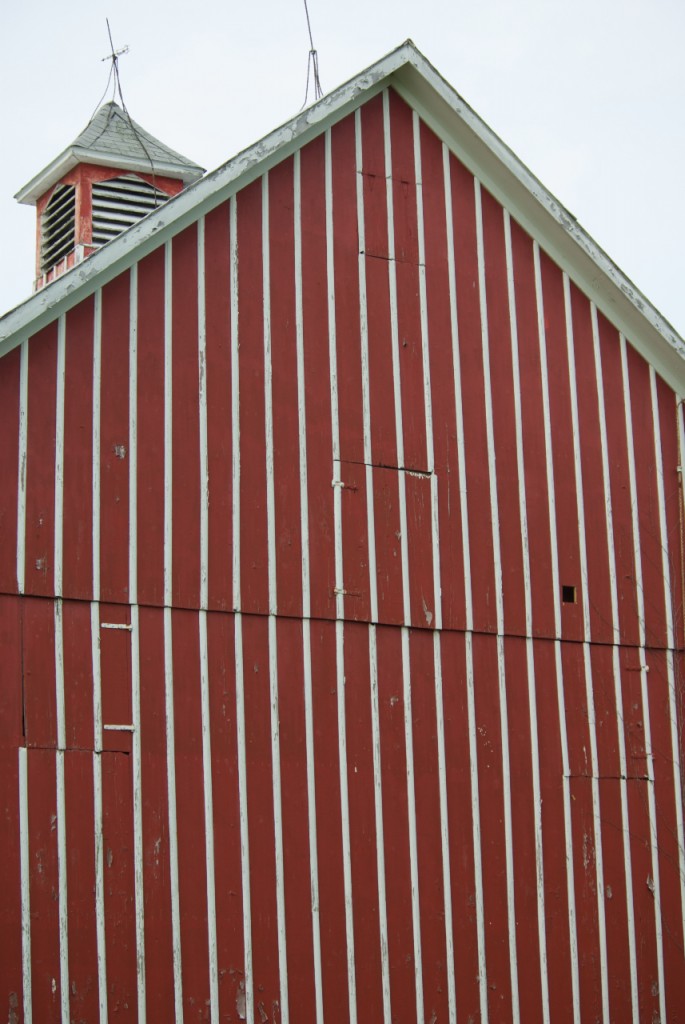
This landowner allowed Clifftop volunteers and Illinois Department of Natural Resources personnel to install a barn owl nesting box. The entrance to the box is the small opening cut into the barn's exterior, visible in center right of the photo. Nesting boxes may help barn owls return to healthy population numbers in our state. Pen DauBach, Clifftop.
Additional steps to aid barn owls include increasing grassland conservation areas and encouraging land use practices than support populations of voles. Conversion of marginal row crop acreages to perennial grasses, including hay fields, wet and dry prairie areas and Conservation Reserve Program enrollments offer larger scale foraging areas for barn owls. But even small yard and property edge areas planted to grassland / prairie species can increase vole populations to help barn owls secure these meal morsels. Rather than mowing large expanses of lawn, homeowners, particularly in rural areas, could benefit barn owls and a host of additional grassland-dependent birds, butterflies and other insects, by converting mowed lawn deserts into native plantings.
Illinois’ barn owl recovery plan is in its early stage of implementation, but is a forward thinking means of moving an endangered species into recovery and off the endangered / threatened listing. If successful, barn owls may again be regarded as the farmers’ – and the rural landowners’ – best friend in the struggle against small mammalian field and garden pests. In the future we may find something gloriously natural rather than superstitious should we glimpse a ghostly-looking bird swooping low over garden, yard and field as it searches out food for hungry owlets.
Landowners who see a barn owl or know of barn owl nesting sites are encouraged to contact their Illinois Department of Natural Resource’s district heritage biologist. Clifftop also will accept reports and forward them on to IDNR.
Clifftop, a local nonprofit organization, is focused on preserving and protecting area bluff lands.
A version of this article appeared in the July 1 2011 edition of the Monroe County Independent.
© 2011 all content rights reserved, Clifftop NFP.
Barn Owl Nesting Boxes, Barn Owls in Illinois, Illinois Barn Owl Recovery Plan
Comments are currently closed.

